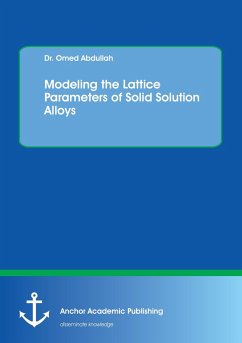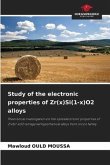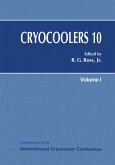In this book, models for the prediction of lattice parameters of substitutional and interstitial solid solutions as a function of concentration and temperature are presented. For substitutional solid solutions, the method is based on the hypothesis that the measured lattice parameter versus concentration is the average of the interatomic spacing within a selected region of a Bravais lattice. The model is applied on Ni-Cu and Ge-Si solid solutions.
For the interstitial solid solution of the Fe-C system, the method is based on the assumption that the change in lattice parameter of the pure Fe phase is due to the occupation by carbon atoms to the octahedral holes in the fcc austenite; and bct martensite.
The model of lattice parameter versus temperature for both substitutional and interstitial solid solutions is based on the relative change in length and vacancy concentration at lattice sites that are in thermal equilibrium. Combinations of both models then facilitate the calculation of lattice parameters as a function of concentration and temperature. The results are discussed accordingly.
For the interstitial solid solution of the Fe-C system, the method is based on the assumption that the change in lattice parameter of the pure Fe phase is due to the occupation by carbon atoms to the octahedral holes in the fcc austenite; and bct martensite.
The model of lattice parameter versus temperature for both substitutional and interstitial solid solutions is based on the relative change in length and vacancy concentration at lattice sites that are in thermal equilibrium. Combinations of both models then facilitate the calculation of lattice parameters as a function of concentration and temperature. The results are discussed accordingly.








